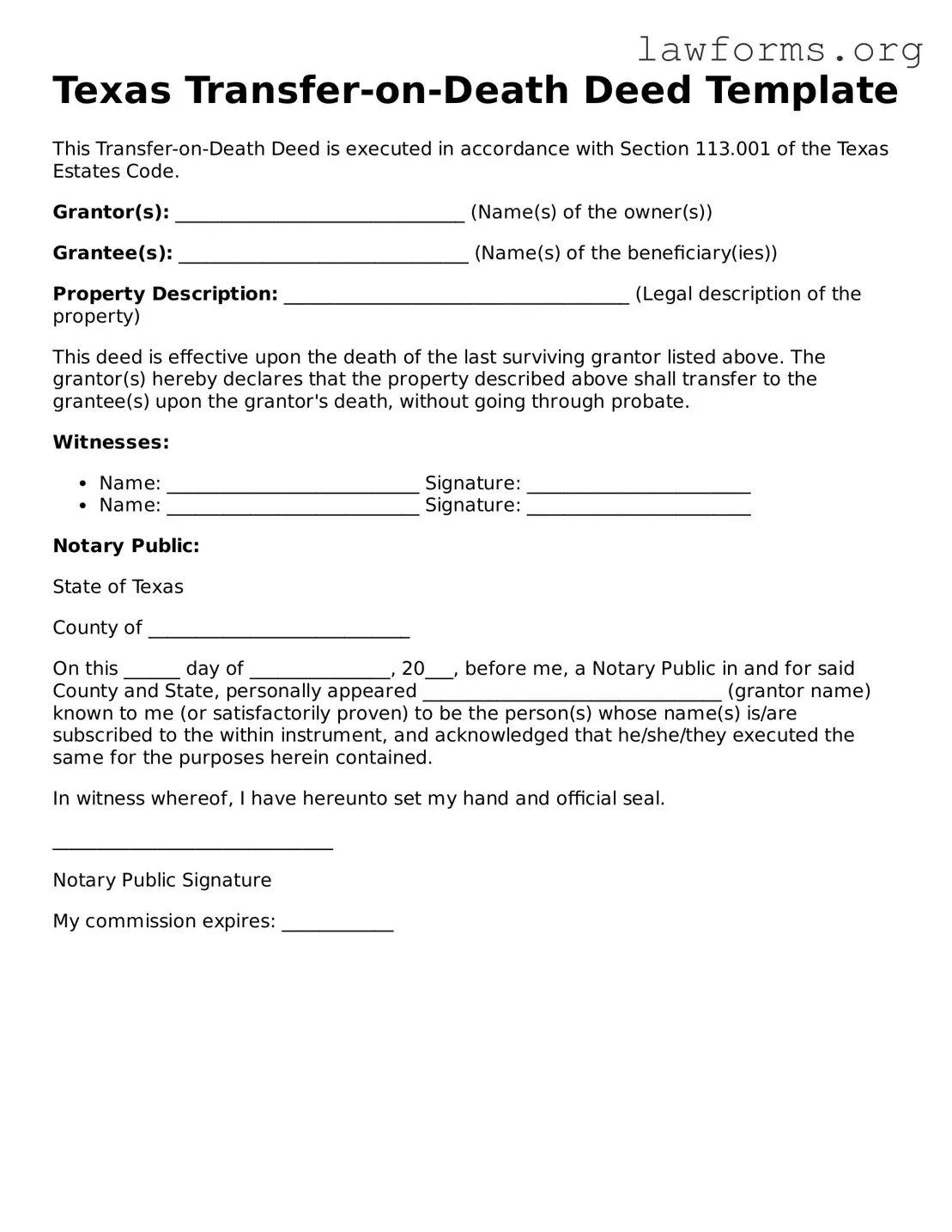Texas Transfer-on-Death Deed Template
This Transfer-on-Death Deed is executed in accordance with Section 113.001 of the Texas Estates Code.
Grantor(s): _______________________________ (Name(s) of the owner(s))
Grantee(s): _______________________________ (Name(s) of the beneficiary(ies))
Property Description: _____________________________________ (Legal description of the property)
This deed is effective upon the death of the last surviving grantor listed above. The grantor(s) hereby declares that the property described above shall transfer to the grantee(s) upon the grantor's death, without going through probate.
Witnesses:
- Name: ___________________________ Signature: ________________________
- Name: ___________________________ Signature: ________________________
Notary Public:
State of Texas
County of ____________________________
On this ______ day of _______________, 20___, before me, a Notary Public in and for said County and State, personally appeared ________________________________ (grantor name) known to me (or satisfactorily proven) to be the person(s) whose name(s) is/are subscribed to the within instrument, and acknowledged that he/she/they executed the same for the purposes herein contained.
In witness whereof, I have hereunto set my hand and official seal.
______________________________
Notary Public Signature
My commission expires: ____________
